Written by Tin-Tsun Bodhisattva
Translated into Chinese during Torng Dynasty by Tripitaka Master Yiun-Tzorng
Translated into English by B.T.T.S.
--------------------------------------------------------------------------------
As the World Honored one has said, "all Dharmas have no self."
What are all Dharmas, and what is meant by having no self? All Dharmas may be generally grouped into five categories:
1. Mind Dharmas
2. Dharmas interactive with the Mind
3. Form Dharmas
4. Dharmas not interactive with the Mind
5. Unconditioned Dharmas
They are in this sequence because the first are supreme, the second interact with the first, the third are the shadows manifest by the previous two, the fourth are the positions in which the previous three are not found, and the last are revealed by the previous four.
The first, Mind Dharmas, include in general eight:
1. The Eye Consciousness
2. The Ear Consciousness
3. The Nose Consciousness
4. The Tongue Consciousness
5. The Body Consciousness
6. The Mind Consciousness
7. The Manas Consciousness
8. The Alaya Consciousness
The second, Dharmas interactive with the Mind, include in general fifty-one. They are divided into six categories:
1. The five universally interactive
2. The five particular states
3. The eleven wholesome
4. The six fundamental afflictions
5. The twenty derivative afflictions
6. The four unfixed
The five particular states are:
1. Desire
2. Resolution
3. Recollection
4. Concentration
5. Judgment
The eleven wholesome Dharmas are:
1. Faith
2. Vigor
3. Shame
4. Remorse
5. Absence of greed
6. Absence of anger
7. Absence of stupidity
8. Light ease
9. Non-laxness
10. Renunciation
11. Non-harming
The six fundamental afflictions are:
1. Greed
2. Anger
3. Stupidity
4. Arrogance
5. Doubt
6. Improper views
The twenty derivative afflictions are:
1. Wrath
2. Hatred
3. Rage
4. Covering
5. Deceit
6. Flattery
7. Conceit
8. Harming
9. Jealousy
10. Stinginess
11. Lack of shame
12. Lack of remorse
13. Lack of faith
14. Laziness
15. Laxness
16. Torpor
17. Restlessness
18. Distraction
19. Improper knowledge
20. Scatteredness
The four unfixed are:
1. Sleep
2. Regret
3. Examination
4. Investigation
The third category is the Form Dharmas. In general there are eleven kinds:
1. Eyes
2. Ears
3. Nose
4. Tongue
5. Body
6. Forms
7. Sounds
8. Smells
9. Flavors
10. Objects of touch
11. Dharmas pertaining to form
The fourth category is the Dharmas not interactive with the Mind. In general, there are twenty-four:
1. Attainment (acquisition)
2. Life-faculty
3. Generic similarity
4. Dissimilarity
5. The no thought samadhi
6. The samadhi of extinction
7. The reward of no thought
8. Bodies of phonemes`
9. Bodies of sentence
10. Bodies of phonemes
11. Birth
12. Dwelling
13. Aging
14. Impermanence
15. Revolution
16. Distinction
17. Interaction
18. Speed
19. Sequence
20. Tim
21. Direction
22. Numeration
23. Combination
24. Discontinuity
The fifth category is the Unconditioned Dharmas of which there are, in general, six:
1. Unconditioned empty space
2. Unconditioned extinction which is attained by selection
3. Unconditioned extinction which is unselected
4. Unconditioned unmoving extinction
5. Unconditioned extinction of feeling and thinking
6. Unconditioned True Suchness
What is meant by there being no self? There are in general, two kinds of Non-self:
1. The Non-self of Pudgala
2. The Non-self of Dharmas
--------------------------------------------------------------------------------
Sunday, June 6, 2010
Subscribe to:
Post Comments (Atom)











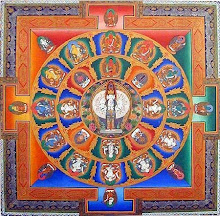




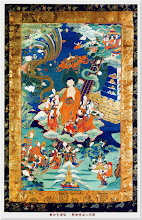

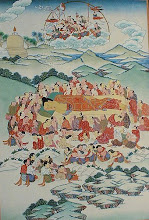


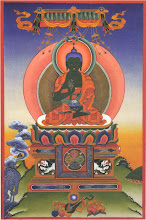




.jpg)

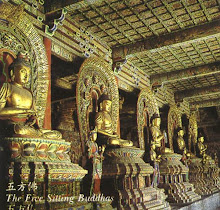













No comments:
Post a Comment